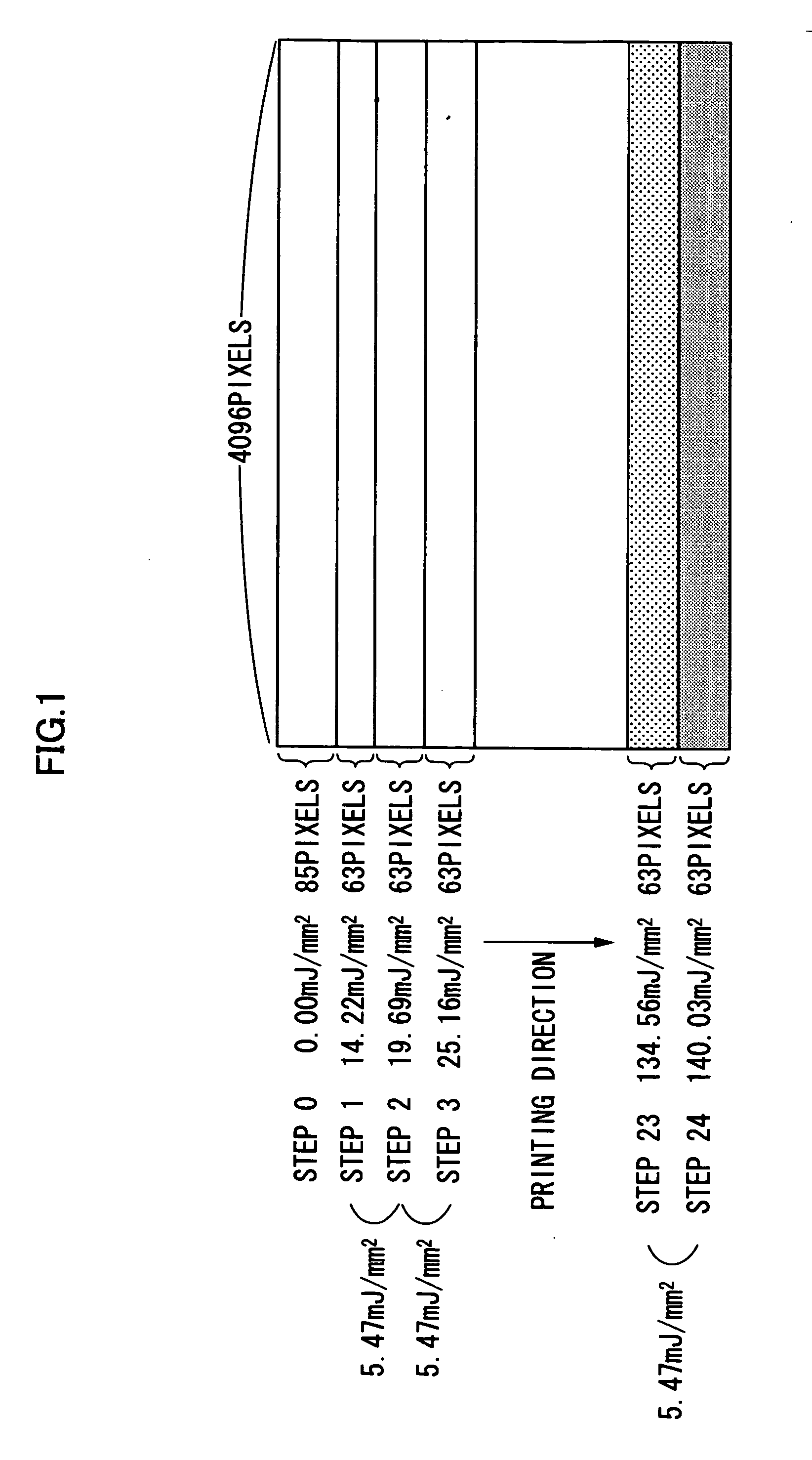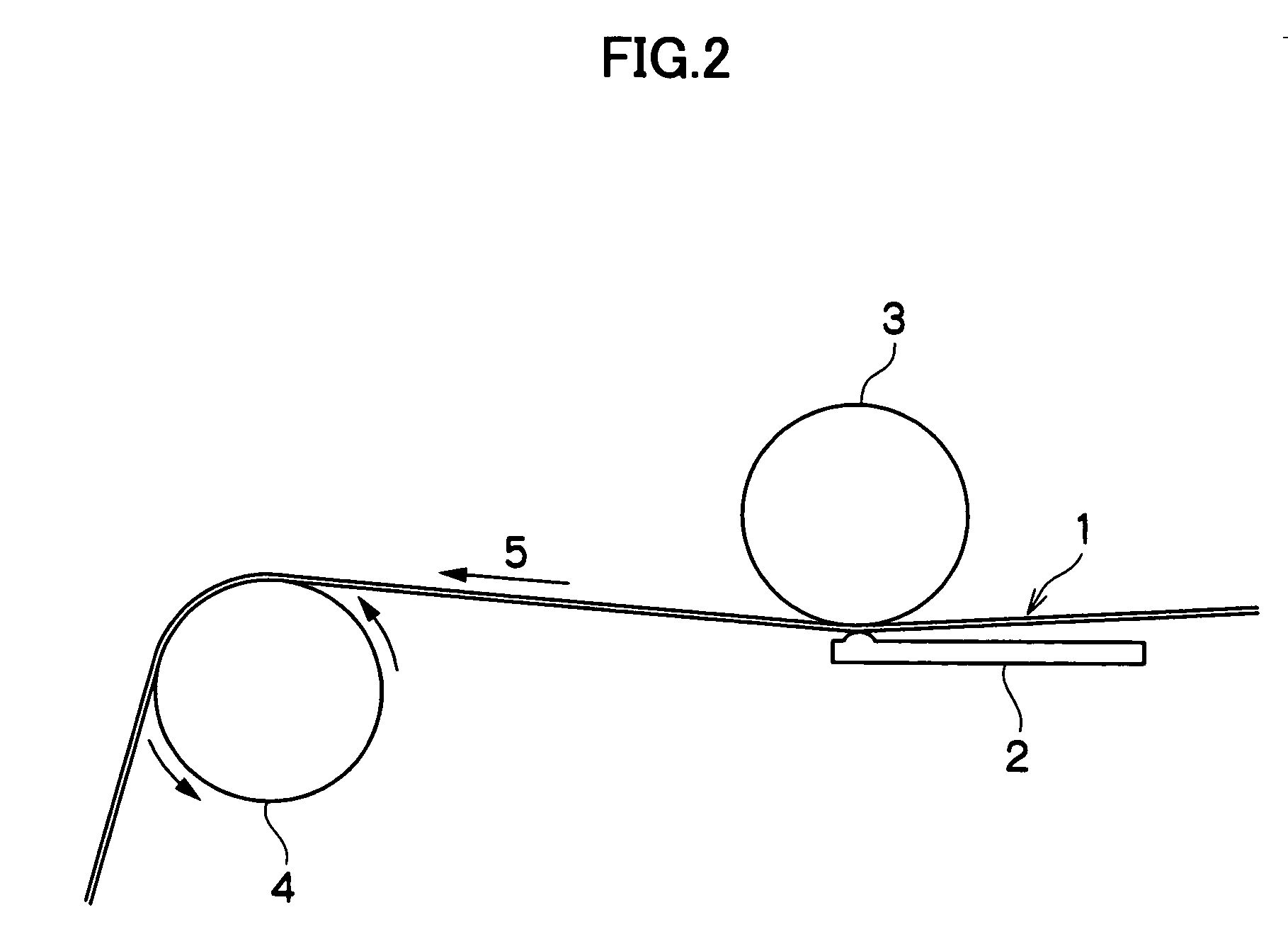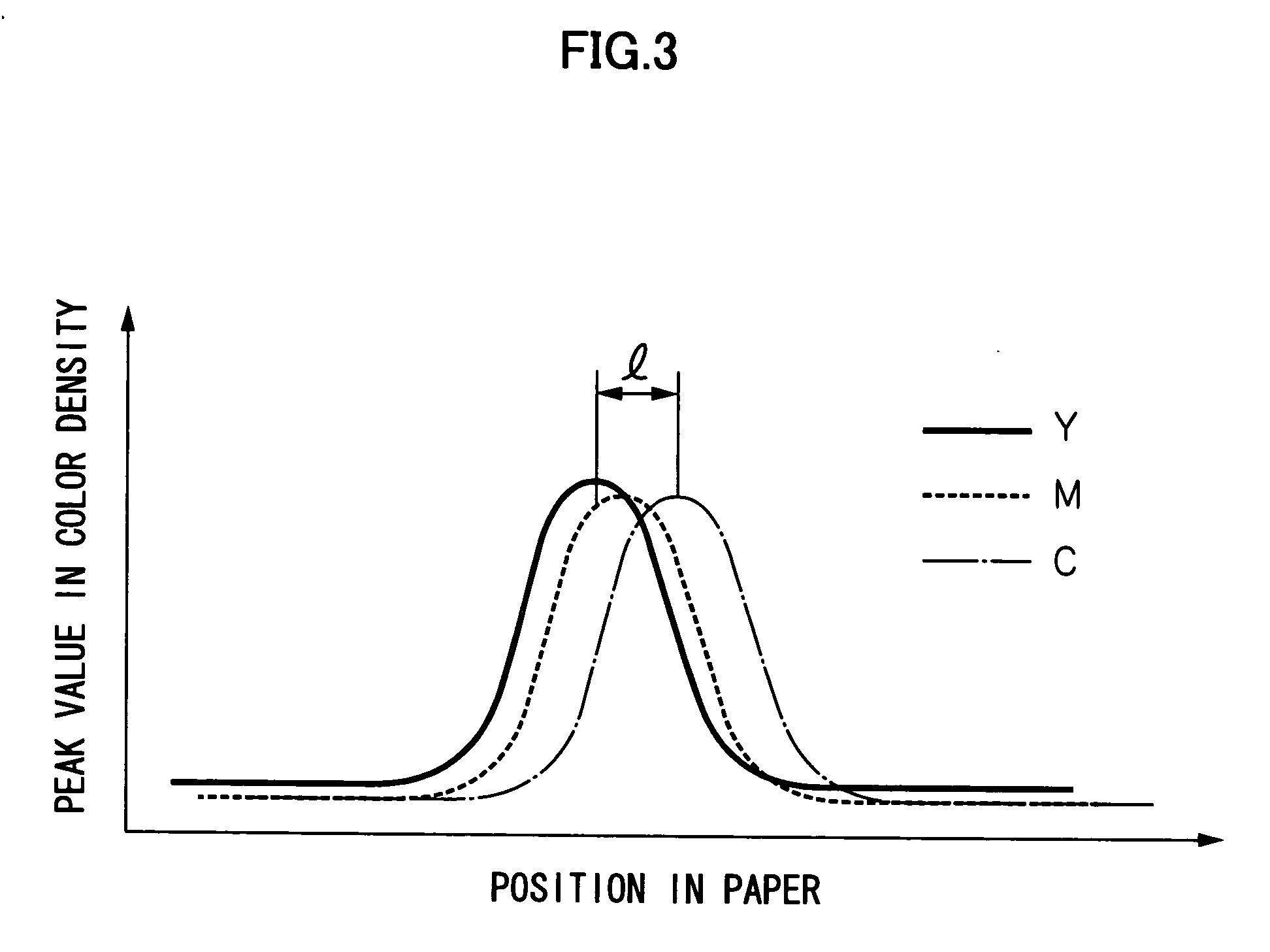Heat-sensitive recording material, heat-sensitive recording method and method for manufacturing heat-sensitive recording material
a recording material and recording method technology, applied in the direction of diazo compound compositions, pattern printing, printing, etc., can solve the problems of deteriorating image quality, density difference in the main scanning direction of the head, and uneven transfer speed, so as to reduce the transport torque, improve the transportability, and suppress the effect of head staining
- Summary
- Abstract
- Description
- Claims
- Application Information
AI Technical Summary
Benefits of technology
Problems solved by technology
Method used
Image
Examples
example 1
(Preparation of the Coating Liquid of Pigment for the Protective Layer)
[0208] (1) In 900 g of water, 280 g of aluminum hydroxide surface-treated with stearic acid (trade name: “HIGILITE H42S”, manufactured by Showa Denko KK) was added as a pigment and stirred for three hours. After that, 8.5 g of a dispersion auxiliary agent (trade name: “POIZ 532A”, manufactured by Kao Corporation), 300 g of 10% aqueous solution of polyvinyl alcohol (trade name: PVA 105, manufactured by Kuraray Co., Ltd.), and 75 g of the 2% aqueous solution of a compound represented by the following formula [100] were added and dispersed with a sand mill to be 0.33 μm in average particle size, and then the concentration was adjusted to be 18% by adding water. Thus, the coating liquid of pigment for the protective layer was obtained.
[0209] Further, the above-mentioned average particle size was measured according to the following procedure: the pigment to be used was dispersed in the presence of a dispersant, an...
example 2
[0254] A heat-sensitive recording material was manufactured and evaluated in the same way as that in Example 1, except that the above-mentioned exemplary compound A-08 which had been used in the preparation of the lubricant dispersion liquid—2 for the protective layer in Example 1 was replaced with the above-mentioned exemplary compound A-06 of the same amount of the solid content. The result is shown in Table 1.
example 3
[0255] A heat-sensitive recording material was manufactured and evaluated in the same way as that in Example 1, except that the above-mentioned exemplary compound A-08 which had been used in the preparation of the lubricant dispersion liquid—2 for the protective layer in Example 1 was replaced with the above-mentioned exemplary compound A-32 of the same amount of the solid content. The resut is shown in Table 1.
PUM
| Property | Measurement | Unit |
|---|---|---|
| temperature | aaaaa | aaaaa |
| particle size | aaaaa | aaaaa |
| particle size | aaaaa | aaaaa |
Abstract
Description
Claims
Application Information
 Login to View More
Login to View More - R&D
- Intellectual Property
- Life Sciences
- Materials
- Tech Scout
- Unparalleled Data Quality
- Higher Quality Content
- 60% Fewer Hallucinations
Browse by: Latest US Patents, China's latest patents, Technical Efficacy Thesaurus, Application Domain, Technology Topic, Popular Technical Reports.
© 2025 PatSnap. All rights reserved.Legal|Privacy policy|Modern Slavery Act Transparency Statement|Sitemap|About US| Contact US: help@patsnap.com



